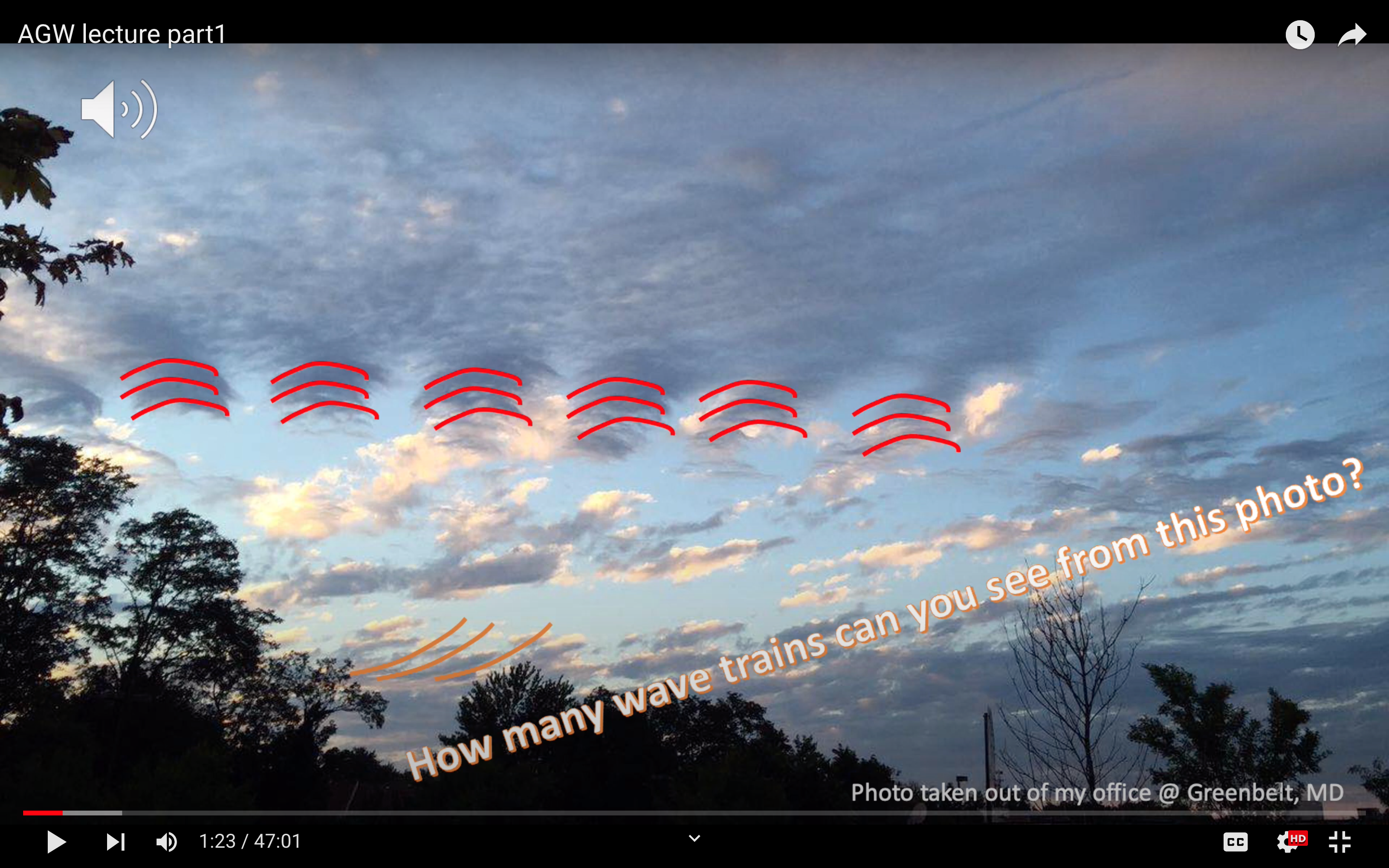Atmospheric Science Lesson 8: Introduction to Atmospheric Gravity Waves
Overview of the content
Learning objectives
After completing this lesson, students will:
- Have a basic knowledge of how atmospheric gravity waves (AGWs) are formed.
- Understand why they are important and scientists want to study them.
- Understand major AGW sources and how they propagate and stop propagation.
- Understand model capabilities and limitations on simulating AGWs and their impacts.
Background information for the instructor
No previous expertience is necessary, but we recommend reviewing the video and documents prior to a class session.
Video content
Atmospheric Gravity Waves, Part 1 by Dr. Jie Gong, NASA Goddard Space Flight Center (YouTube, 47:01, closed captioned)
Optional readings / articles
"Introduction to Dynamic Meteorology" by James Holton, Chapter 7 [This is a PDF document owned by a non-MSU entity] This book should also be available in your university library and many other online sources.
Slides or handouts

Download the slide deck for the above video in Powerpoint format
Download the slide deck for the above video in PDF format
Both are provided to assist the instructor and are included here as an alternative download
Discussion questions for class
- Why do we believe an eclipse can generate atmospheric gravity waves? Encourage students to use one of the mechanisms introduced in this lesson to describe their hypothesis.
- At which altitude eclipse-AGWs could likely happen?
- Could eclipse-AGWs have an impact on the atmosphere?
Homework / Extended learning
- When a rising balloon passes through a gravity wave front, which way do you think its trajectory will look like?
-
- up-down oscillation
- slantwise oscillation
- spiral oscillation
2.The vertical oscillation component of gravity wave originates from a balance between gravity and buoyancy. What forces balance on the horizontal direction?
3. Can you name a few atmospheric gravity wave sources? Can you name a few oceanic gravity wave sources?
4. Can you lay-out a few reasons why gravity waves are important, so we need to study them?
5. Can you lay-out a few challenges for models to simulate gravity wave impacts?
6. Can you think of some processes that a typical climate model cannot resolve other than the ones listed in the slides?
7. Given a global climate model (GCM) grid size of 100 km, and the earth radius of 6371 km, theoretically what are the smallest and largest wavelength of waves that this GCM can resolve?
View the homework key
![]() Don't forget to track today's progress in your portfolio
Don't forget to track today's progress in your portfolio
Will you take a few minutes to give us some feedback on this lesson? Thank you!
Course home page // Next lesson >>

